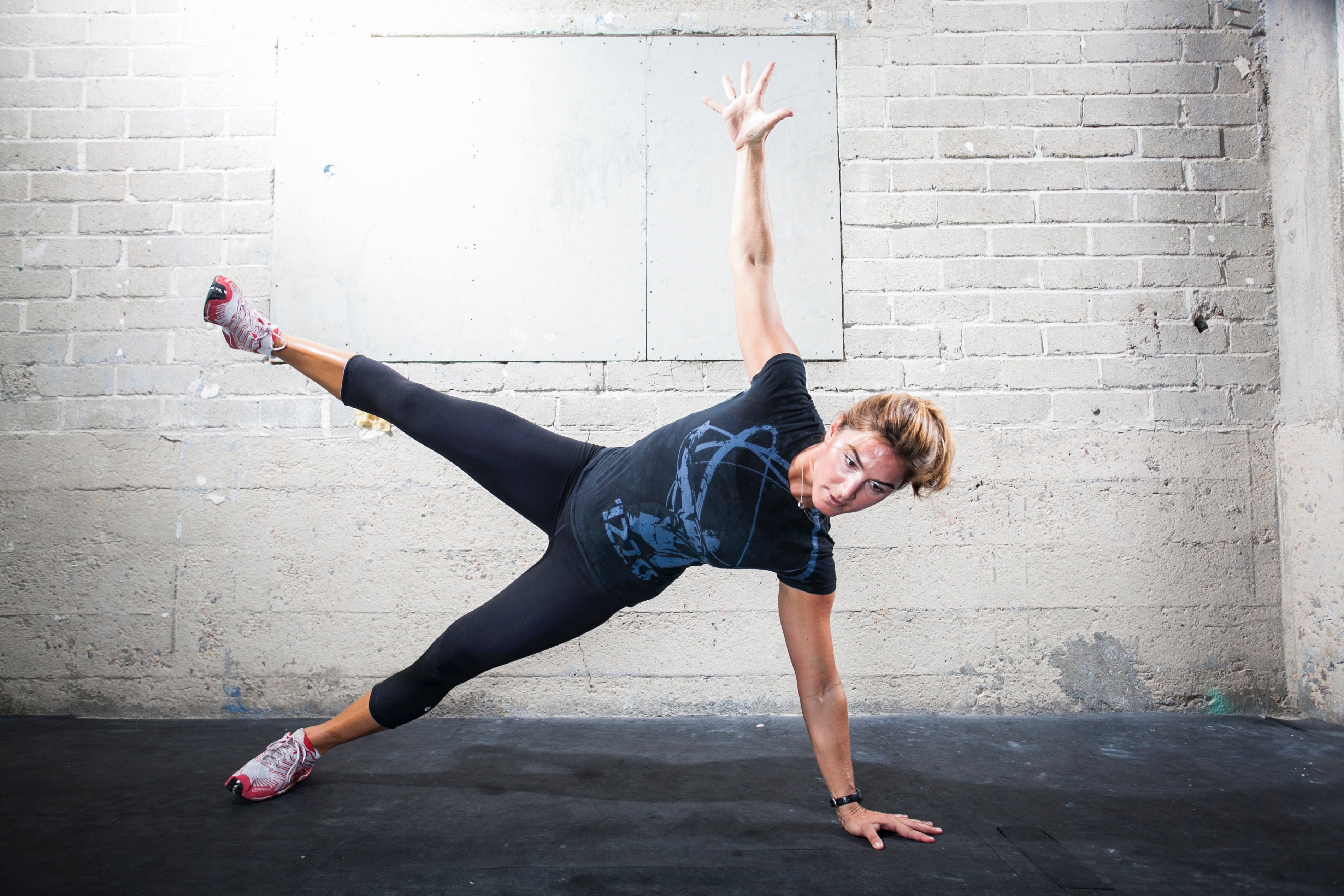Should You Try CrossFit?

Photo by Scott Draper
Is CrossFit good for women runners? The answer will vary depending on whom you ask. Traditionalists in the running community cast a wary eye at the thought of runners participating in dynamic workouts that include moves like deadlifts, box jumps and Olympic lifts. However, anecdotal reports flowing from CrossFit gyms around the country are suggesting a counter-narrative: that CrossFit is helping women runners prevent injury and increase their overall health, often with personal record road races to boot.
Take Libby Gordon-Siegal, a registered nurse in Santa Cruz, Calif., who was forced to stop running after became ensnared with a recurring Achilles tendon injury.
“The injury just happened over and and over,” she says. Friends of hers began to recommend using CrossFit as a rehab device, but Gordon-Siegal was skeptical.
“It took a good year or more before they convinced me to try it,” she says. “I had three girlfriends who kept telling me: You’ve got to try CrossFit. But I thought I’m already beat up as a runner and I’d heard all of these nightmare stories about what happened in CrossFit.”
Gordon-Siegal finally decided to try it in July of 2012. So far her experience has been positive. “I’m totally addicted,” she says. “I was telling one of my friends last night: All of my injury issues have disappeared. I not only feel stronger but healthier overall.”
Gordon-Siegal introduction to CrossFit came through working with Annie Sakamoto, of CrossFit Santa Cruz Central. Gordon-Siegal didn’t know it at the time, but her trainer was o of the most noted CrossFitters in the world. Sakamoto is a star athlete, coach and a mother of two who’s featured in a number of the video demonstrations of CrossFit exercises and workouts archived on CrossFit.com.ne
What Sakamoto first saw when she met Gordon-Siegal was a trail runner with multiple weaknesses and imbalances.
“I think her injury problems had a lot to do with her midline stability,” Sakamoto says. “She wasn’t really hunched over or anything, but she didn’t quite hold her shoulders back, and there was a lack of awareness in terms of proper body position in the hips and core.”
In addition to clearing Gordon-Siegal of her injury problems, she’s noticed an improvement in her trail running performance.
“I’m definitely stronger on the hills,” Gordon-Siegal of says. “Both running uphill and downhill. I used to have a much sloppier form on the downhills. Now I feel much more balanced.”
The coach has noticed the changes too. “Her posture is really improved,” Sakamoto says. “And she’s developed a lot of overall body strength.”
In fact, Sakamoto noticed that her client had improved in some of the upper body movements and wondered if she was ready to try a pull-up.
With her newfound upper body strength, Gordon-Siegal was able to do a single pull-up for the first time in her life.
“It was a moment of glory,” she says with a laugh.
She now advises other runners to check out CrossFit.
“They ask me, ‘Why would you go there if you’re a runner? Aren’t you getting beat up?’ I say, ‘No, it’s the total opposite.’”
Valerie Hunt is a CrossFit Endurance coach at Fit and Fearless in Austin, Texas. A prolific runner since 1994, a steady stream of shin splints and hamstring problems that would eventually introduce her to CrossFit. In addition to her expertise in the CrossFit Endurance world, she is a Master level Pose Method teacher, the Pose Method a running technique developed by Dr. Nicolas Romanov that emphasizes a style of body position, stride length and foot strike mechanics intended to increase efficiency and reduce injury risks.
In Austin, Hunt incorporates CrossFit in her work with both runners and triathletes. “I’m used to getting broken people,” she says. “They’ll walk in and are so frustrated they’ll say, ‘I’m ready to try anything.’”
“My client base is mostly runners,” Hunt adds. “I’ve got them to try CrossFit and their setting personal records. I have a really young runner who only had the goal of running a sub 20-minute 5k. She just ran 18:08. I have another runner who just qualified for Boston. The reality of what’s going on here is that they’re now stronger.”
Hunt qualifies the definition of being strong as being different than gaining bulk.
“Everyone is getting these success stories and the fact is that these women are not putting on any weight. Their weight shifts: They’re leaner and stronger.”
Hunt concurs with Sakamoto about the value of CrossFit in regards to posture.
“What happens is that CrossFit training allows you to be able to hold a position longer while running. Your shoulders stay up and don’t collapse forward. The midline, glutes and core are much stronger. And this is why you get less injuries. And I’m seeing runners hold higher speeds for longer times.”
For runners who wish to mesh CrossFit into their running, what does Hunt advise?
“Most CrossFit gyms have an on-ramp program to teach you all the movements.” Master the movements first before your add things like intensity and load. Then, Hunt says, try going to CrossFit classes two-times per week, perhaps supplanting at least one of your regular run workouts to keep the overall load on the safe side. “Give yourself a month a that level and then look to increase your schedule to include three CrossFit workouts per week.”
Best yet, Hunt says, is to find a CrossFit Endurance program offered at a local CrossFit gym (go to www.crossfitendurance.com to look for a gym near you or e-mail info@crossfitendurance.com). CrossFit Endurance programs are designed specifically for runners and triathletes.